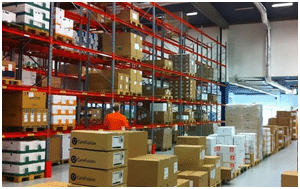The enterprise of selling goods in large amounts to vendors or other companies rather than directly to consumers is known as wholesale trade. Furthermore, wholesale trade is critical in the goods supply chain because it allows manufacturers and producers to disseminate their products to a larger market. This article will review everything there is to know about wholesale trade, including its advantages, disadvantages, and best practices.

The Benefits of Wholesale Trade
Wholesale trade offers several benefits to both manufacturers and retailers, including:
Increased Distribution
Wholesale trade enables companies to distribute their products to a wider market, reaching retailers and businesses that they may not have been able to reach otherwise. They can even reach the international market all thanks to the wholesaler’s influence and capability.
Bulk Purchases
Retailers can purchase goods in bulk at a lower cost than if they were purchasing smaller quantities directly from the manufacturer. As we know, most of the time, manufacturers sell their commodities in larger amounts like bulk eyelashes for beauty firms or bulk clothing for garments. This enables retailers to offer competitive prices to their customers.
Reduced Inventory Costs
Wholesalers can also hold a large inventory of goods, reducing the need for manufacturers and retailers to hold large inventories themselves. This situation helps manufacturers a lot in terms of good storage.
Economies of Scale
Wholesale trade then enables businesses to profit from economies of scale, as the cost per unit of a product decreases as the quantity produced or sold increases.
Challenges of Wholesale Trade
While wholesale trade offers several benefits, there are also several challenges that businesses in this industry may face, including:
Competition
The wholesale trade industry can be highly competitive, with numerous wholesalers vying for business from manufacturers and retailers. Also, there are lots of things that you can sell so the competition in the goods also follows with it.
Price Pressure
Wholesalers may face pressure to offer competitive prices, which can put pressure on profit margins. As customers most often demand cheaper prices for a high-quality product.
Inventory Management

Also, wholesalers must manage a large inventory of goods, which can be costly and require significant warehouse space, so it adds to their expenses too.
Varying Demand
Demand for products can fluctuate, making it challenging for wholesalers to accurately predict inventory needs and pricing.
Best Practices for Wholesale Trade
Developing Strong Relationships
In wholesale trade, strong relationships with manufacturers, retailers, and other businesses are critical. Effective communication, trust, and a dedication to meeting the needs of each customer are required.
Effective Inventory Management
Wholesalers should develop effective inventory management systems to ensure that they are able to meet the needs of their customers while minimizing inventory costs on their end.
Competitive Pricing
Wholesalers must try to keep up profit margins while offering competitive prices. This method necessitates a thorough understanding of market trends, customer needs, and the costs of manufacturing and distributing products. Competitive pricing means they can able to keep loyal customers and gain more because of the value of their goods.
Leveraging Technology
Technology can play a key role in streamlining the wholesale trade process, from inventory management to order processing and shipping. Wholesalers should invest in technology solutions that help to automate and streamline their operations.
Conclusion
Wholesale trade is critical in the goods supply chain, allowing manufacturers to disseminate their products to a bigger market and retailers to consider buying goods at a lower price. While wholesale trade has many edges, it also has some disadvantages that firms in this industry must deal with, and following best practices can help to mitigate these drawbacks to be able to succeed in the wholesale trade.






